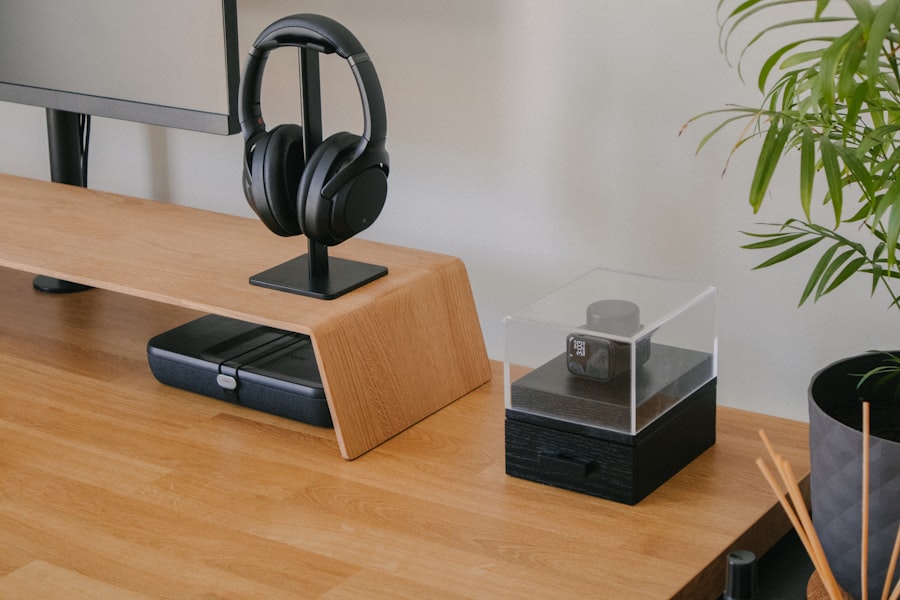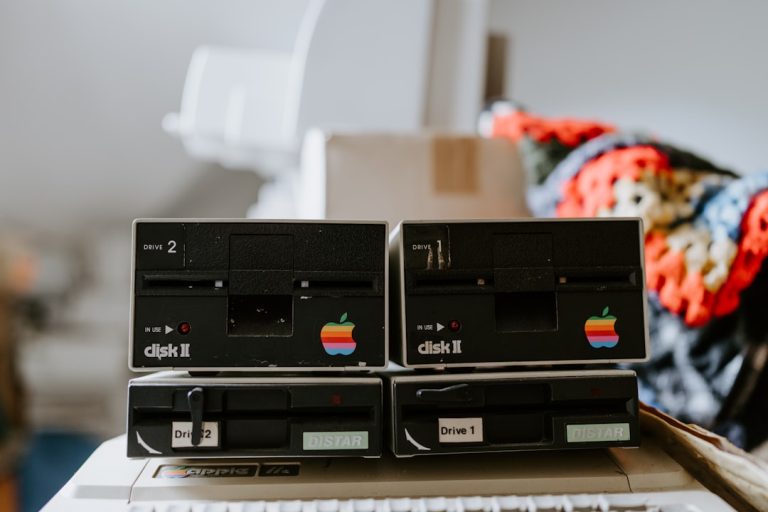
The phenomenon of podcasting has transformed the way we consume audio content, evolving from a niche hobby into a mainstream medium. The term “podcast” itself is a portmanteau of “iPod” and “broadcast,” first coined in 2004 by journalist Ben Hammersley in an article for The Guardian. The early days of podcasting were characterized by a handful of tech enthusiasts who experimented with the format, creating audio files that could be downloaded and played on portable media devices.
This initial wave of podcasters laid the groundwork for what would become a vast and diverse landscape of audio programming. As technology advanced, so did the accessibility of podcasting. The introduction of the iPhone in 2007 and the subsequent integration of podcasting into Apple’s iTunes platform significantly broadened the audience.
By allowing users to easily subscribe to and download episodes, these developments catalyzed a surge in popularity. The rise of smartphones and mobile internet access further propelled the medium, enabling listeners to enjoy podcasts during commutes, workouts, or while multitasking at home. By the late 2010s, podcasts had become a cultural staple, with millions of shows available across various genres, attracting listeners from all walks of life.
Key Takeaways
- Podcasts have risen in popularity due to their convenience and accessibility, with a brief history dating back to the early 2000s.
- Listening to podcasts and audio content can provide numerous benefits, including entertainment, education, and the ability to multitask.
- There are various types of podcasts and audio content to explore, such as interviews, storytelling, news, and educational content.
- Finding and subscribing to your favorite podcasts can be done through various platforms and apps, making it easy to stay updated on new episodes.
- Creating your own podcast or audio content requires careful planning, storytelling skills, and the right equipment to make an impact on your audience.
- Podcasts have had a significant impact on society and culture, influencing trends, conversations, and the way we consume media.
- The future of podcasts and audio content is expected to continue growing, with advancements in technology and new opportunities for creators and listeners.
- To maximize your listening experience with podcasts and audio content, consider using headphones, taking notes, and exploring different genres and topics.
The Benefits of Listening to Podcasts and Audio Content
Podcasts offer a unique blend of entertainment and education, making them an appealing choice for many listeners. One of the primary benefits is the convenience they provide. Unlike traditional media formats, podcasts can be consumed on-the-go, allowing individuals to integrate learning and entertainment into their daily routines seamlessly.
Whether commuting to work, exercising, or doing household chores, listeners can engage with content that interests them without needing to dedicate specific time slots for viewing or reading. Moreover, podcasts foster a sense of community and connection among listeners. Many shows encourage audience interaction through social media platforms or dedicated forums, creating spaces where fans can discuss episodes, share insights, and connect over shared interests.
This sense of belonging can be particularly valuable in an increasingly digital world where personal connections may feel fleeting. Additionally, the intimate nature of audio storytelling allows hosts to build rapport with their audience, making listeners feel as though they are part of a conversation rather than passive consumers of content.
Different Types of Podcasts and Audio Content to Explore

The diversity of podcasts available today is staggering, catering to virtually every interest imaginable. True crime podcasts have surged in popularity, captivating audiences with gripping narratives and investigative storytelling. Shows like “Serial” have not only entertained but also sparked discussions about justice and the legal system, demonstrating the power of audio storytelling to influence public perception.
In contrast, educational podcasts have gained traction among those seeking to expand their knowledge on various subjects. Programs such as “Stuff You Should Know” delve into a wide array of topics, from science to history, presenting complex ideas in an engaging and accessible manner. Similarly, language-learning podcasts offer immersive experiences for those looking to acquire new skills or enhance their fluency.
These examples illustrate how podcasts can serve as valuable resources for personal growth and lifelong learning.
How to Find and Subscribe to Your Favorite Podcasts
| Platform | Number of Podcasts | Subscription Options |
|---|---|---|
| Apple Podcasts | Over 1 million | Free |
| Spotify | Over 2 million | Free and Premium |
| Google Podcasts | Over 2 million | Free |
| Stitcher | Over 100,000 | Free and Premium |
Finding and subscribing to podcasts has never been easier, thanks to the proliferation of platforms designed specifically for this purpose. Popular apps like Apple Podcasts, Spotify, and Google Podcasts allow users to search for shows by genre, popularity, or specific keywords. These platforms often feature curated lists and recommendations based on listening habits, making it simple for newcomers to discover content that aligns with their interests.
Once a listener identifies a podcast they enjoy, subscribing is typically just a click away. Subscribing ensures that new episodes are automatically downloaded or made available for streaming as soon as they are released. Many platforms also allow users to create playlists or save favorite episodes for later listening.
This functionality enhances the overall experience by enabling listeners to curate their own audio libraries tailored to their preferences.
The Art of Creating Your Own Podcast or Audio Content
Creating a podcast can be an exciting venture for those looking to share their passions or expertise with a wider audience. The first step in this process is identifying a niche or topic that resonates with potential listeners. This could range from personal anecdotes and storytelling to expert interviews or deep dives into specific subjects.
Understanding the target audience is crucial; knowing what they want to hear will guide content creation and help establish a loyal following. Once the concept is solidified, aspiring podcasters must consider the technical aspects of production. This includes selecting appropriate recording equipment, editing software, and hosting platforms.
High-quality audio is essential for maintaining listener engagement; therefore, investing in a good microphone and learning basic editing techniques can significantly enhance the final product.
The Impact of Podcasts on Society and Culture

Podcasts have emerged as powerful tools for shaping societal narratives and influencing cultural discourse. They provide platforms for marginalized voices that may not receive adequate representation in mainstream media.
By amplifying diverse perspectives, podcasts contribute to a richer understanding of societal dynamics. Furthermore, podcasts have played a pivotal role in raising awareness about critical issues such as mental health, climate change, and social justice. Programs like “Therapy Chat” explore mental health topics in depth, helping to destigmatize conversations around mental well-being.
Similarly, environmental podcasts like “How to Save a Planet” educate listeners on sustainability practices and inspire action toward combating climate change. Through storytelling and expert interviews, these shows not only inform but also motivate audiences to engage with pressing global challenges.
The Future of Podcasts and Audio Content
As technology continues to evolve, so too will the landscape of podcasting and audio content. The rise of artificial intelligence (AI) is poised to influence how podcasts are produced and consumed. AI-driven tools can assist in editing audio files, generating transcripts, or even creating personalized listening experiences based on user preferences.
This technological advancement could streamline production processes for creators while enhancing accessibility for listeners. Moreover, the integration of augmented reality (AR) and virtual reality (VR) into audio experiences may redefine how audiences engage with content. Imagine listening to a podcast while simultaneously experiencing immersive visuals that complement the narrative; this could revolutionize storytelling in ways previously unimagined.
As platforms continue to innovate and adapt to changing consumer behaviors, the future of podcasts promises exciting possibilities for both creators and audiences alike.
Tips for Maximizing Your Listening Experience with Podcasts and Audio Content
To fully enjoy the wealth of content available through podcasts, listeners can adopt several strategies that enhance their experience. First and foremost is curating a personalized playlist that reflects individual interests. By subscribing to a variety of shows across different genres—be it comedy, news, or educational content—listeners can create a rich tapestry of audio experiences that keep them engaged.
Additionally, taking advantage of features such as speed control can optimize listening time without sacrificing comprehension. Many podcast apps allow users to adjust playback speed; this can be particularly useful when consuming lengthy episodes or when trying to absorb dense information quickly. Engaging with show notes or supplementary materials provided by creators can also deepen understanding and enrich the listening experience.
Finally, participating in discussions surrounding favorite podcasts can enhance enjoyment further. Joining online communities or social media groups dedicated to specific shows allows fans to share insights, theories, and recommendations with like-minded individuals. This interaction not only fosters a sense of community but also opens up avenues for discovering new content that aligns with personal tastes.
In summary, the world of podcasts offers an expansive array of opportunities for both listeners and creators alike. From their historical roots to their current cultural significance and future potential, podcasts continue to shape how we engage with audio content in meaningful ways.
If you’re interested in learning more about the future of podcasts and audio content, you may want to check out this article on Sersea Media’s blog titled “Hello World.” The article discusses the latest trends and innovations in the world of audio content and how it is shaping the way we consume information and entertainment. To read more about this topic, you can visit this link.
FAQs
What are podcasts?
Podcasts are digital audio files that are available for streaming or downloading on the internet. They cover a wide range of topics and can be listened to on various devices such as smartphones, computers, and tablets.
How can I listen to podcasts?
You can listen to podcasts through various platforms and apps such as Apple Podcasts, Spotify, Google Podcasts, and Stitcher. Many podcasts also have their own websites where you can listen to episodes directly.
What kind of content is available in podcasts?
Podcasts cover a wide range of topics including news, entertainment, education, storytelling, interviews, and more. There are podcasts available for almost every interest and niche.
Are podcasts free to listen to?
Many podcasts are free to listen to, as they are supported by advertising or sponsorships. Some podcasts may offer premium content or ad-free listening for a subscription fee.
Can I create my own podcast?
Yes, anyone can create their own podcast with the right equipment and software. There are many resources available online to help guide you through the process of creating and publishing a podcast.


